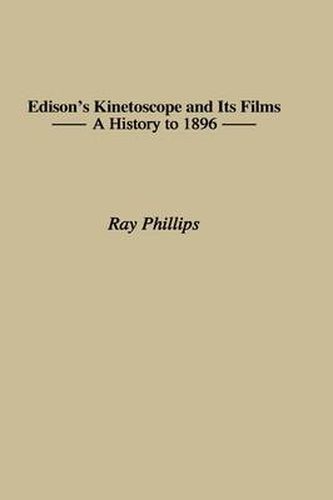Readings Newsletter
Become a Readings Member to make your shopping experience even easier.
Sign in or sign up for free!
You’re not far away from qualifying for FREE standard shipping within Australia
You’ve qualified for FREE standard shipping within Australia
The cart is loading…






Motion pictures were first seen in 1894, when Thomas Edison introduced the Kinetoscope, a device for individually looking at film through a viewer. Over the next three years, Edison manufactured almost 1,000 Kinetoscopes and produced some 250 films to show in them. A million people worldwide first saw motion pictures through these devices.
This book describes in detail how Kinetoscopes worked and how they were sold, and describes the parlors to which the public flocked, fascinated by the novelty of moving images. It examines how the machines were copied by others and later eclipsed by the advent of projection. It also indicates where surviving machines can be found in the United States and Europe. The book concludes with an index to Edison’s films between 1892 and 1896, and presents titles, filming dates, subject descriptions, and information on the location of surviving copies. Copiously illustrated, the book is a vital research tool for all students of motion picture history.
$9.00 standard shipping within Australia
FREE standard shipping within Australia for orders over $100.00
Express & International shipping calculated at checkout
Motion pictures were first seen in 1894, when Thomas Edison introduced the Kinetoscope, a device for individually looking at film through a viewer. Over the next three years, Edison manufactured almost 1,000 Kinetoscopes and produced some 250 films to show in them. A million people worldwide first saw motion pictures through these devices.
This book describes in detail how Kinetoscopes worked and how they were sold, and describes the parlors to which the public flocked, fascinated by the novelty of moving images. It examines how the machines were copied by others and later eclipsed by the advent of projection. It also indicates where surviving machines can be found in the United States and Europe. The book concludes with an index to Edison’s films between 1892 and 1896, and presents titles, filming dates, subject descriptions, and information on the location of surviving copies. Copiously illustrated, the book is a vital research tool for all students of motion picture history.